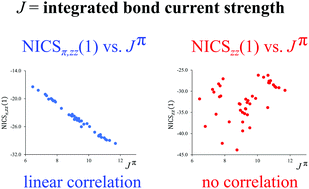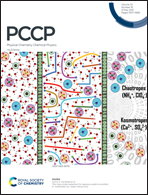Relating nucleus independent chemical shifts with integrated current density strengths†
Abstract
Indices based on the nucleus independent chemical shift (NICS) are the most frequently used in analysis of magnetic aromaticity. The magnetically induced current density, on the other hand, is a key concept in defining magnetic aromaticity. The integrated current strength (current strength susceptibility) was found to be a very useful tool in aromaticity studies. There is widely accepted notion that the properly chosen NICS-based index can provide information on the current density strength and direction in a molecule of interest. In this work, a detailed numerical testing of the relationship between the integrated bond current strength and the most employed NICS indices was performed for a set of 43 monocyclic aromatic molecules. Based on the statistical data analysis, the relationship between the bond current strength and its π and σ electron components, on one side, and the isotropic NICS (NICSiso and NICSπ,iso) and zz-component of the NICS tensor (NICSzz and NICSπ,zz), on the other side, was examined. It was found that between the NICSπ,zz(1) and π-electron bond current strenghts there is very good linear correlation. Quite surprisingly, it was revealed that the NICSiso(1) and NICSzz(1) are not correlated with the π electron bond current strengths. On the other hand, a reasonably good linear correlation was found between the NICSzz(1) and total bond current strengths.

- This article is part of the themed collection: 2021 PCCP HOT Articles


 Please wait while we load your content...
Please wait while we load your content...